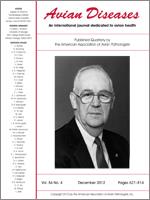BioOne.org will be down briefly for maintenance on 14 May 2025 between 18:00-22:00 Pacific Time US. We apologize for any inconvenience.
Articles (3)
Awards (1)
Invited Review (1)
Regular Articles (13)
Research Notes (3)
Case Reports (10)
Erratum (1)
Author Index (1)
Subject Index (1)

No abstract available
No abstract available
No abstract available
No abstract available
No abstract available
No abstract available
No abstract available
No abstract available
No abstract available
